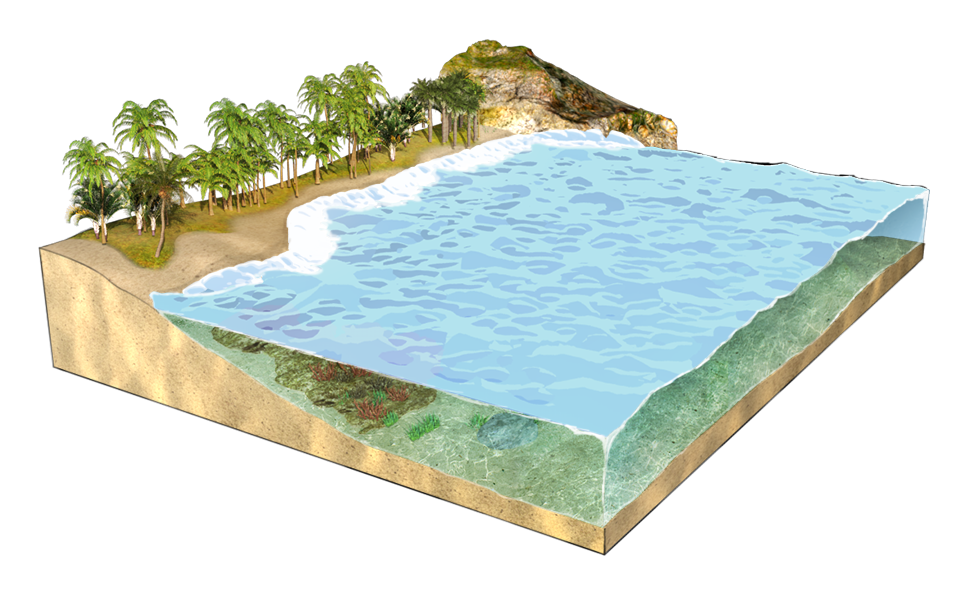

The simulations were carried out by integrating the Navier-Stokes equations in three dimensions, using the RNG turbulence model and a computational grid with a fine mesh nested inside a larger coarse grid.įor the submerged barrier (calculation domain: 90×1.9×6.5m), the containing mesh block consisted of 46,200 elements of equal size (0.30×0.27×0.30m), while the nested block was located at the breakwater with 2,353,412 elements of equal size (0.061×0.055×0.061m). Once the breakwaters were defined, the geometric configuration was imported into FLOW-3D and tested for the study of wave propagation in order to assess the hydrodynamic interactions. 2a), while for the emerged breakwater, two different geometries were used, according to the shape of the elements: regular and random (Fig.

In order to validate the quality of the proposed procedure, three different geometries were considered for the submerged breakwater: solid, porous, solid-porous (Fig.
#Design of breakwaters full size
1).īreakwaters, both submerged and emerged, were sized by making use of standard empirical formulas as available in the literature and numerically constructed by overlapping individual blocks following real geometric patterns, modelling the structure as in the full size construction and in the physical modelling (Fig. The work takes into consideration a schematic representation of a natural stone mound, reproduced as a set of spheres, and was further developed to consider commonly-used artificial blocks such as the cube, the modified cube, the antifer, the tetrapod, the accropode, the accropode II, the coreloc, the xbloc,and the xbloc base (Fig. The following examples describe cases where rubble mound breakwaters are modeled on the basis of their real geometry, taking into account the hydrodynamic interactions with the wave motion. This enables the evaluation of the effect of the full hydrodynamic behavior, including convective terms, and the effects of turbulence, which cannot be taken into account with the classical Darcy scheme in which the breakwaters are approximated as homogeneous porous media.

It is now possible to accurately represent a solid structure consisting of individual blocks which interacts with the flow, so as to create a numerical flow domain within the empty spaces between the blocks. The gap between numerical and physical investigations has narrowed, thanks to the advancement of computing technology. This is especially the case for breakwaters consisting of rubble mounds composed of blocks of concrete or rocks in which water flows through complex paths with unsteady motion. Until recently, the complex aspects of breakwater behavior were considered too challenging for detailed numerical simulations. Typically, design work entails extensive physical modelling, which can be quite expensive and time-consuming. The design of breakwaters must be based on the full understanding of the interaction of a complex natural system (the sea and shores) with artificial structures (breakwaters). Mascetti is an engineer at XC Engineering, Flow Science’s associate for Italy and France. The first three authors are users at the University of Salerno Mr. This article is an adapted version of an article published in the journal of the Engineering Association for Offshore and Marine in Italy by Fabio Dentale, E.


 0 kommentar(er)
0 kommentar(er)
